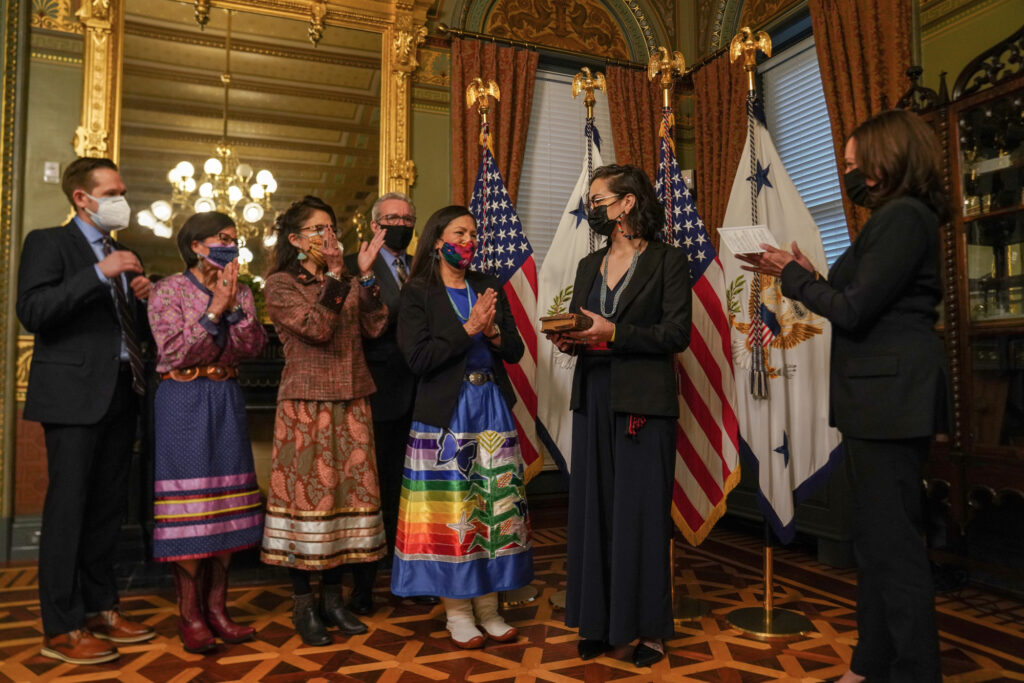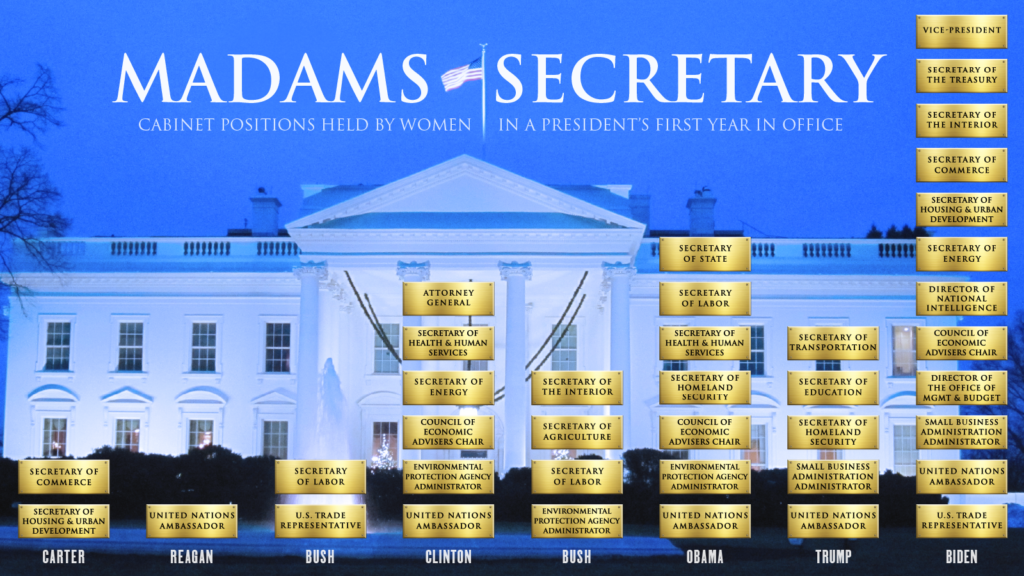Embodying the phrase “if you can see it, you can be it,” normalizing women in political leadership positions will normalize the idea of women as leaders, period.

In 1923, suffragist and ERA author Alice Paul wrote, “My hope is that a hundred years from now the world will no longer be a man’s world, but a woman’s and man’s world with each sex participating equally in the control of government.” Ninety-eight years later, women make up less than 30 percent of U.S. elected officials and no woman has served as president. Where did the U.S. go wrong? And how can activists and legislators correct the mistakes made, ensuring women are equally represented in America?
To answer this question, throughout Women’s History Month, Ms. and RepresentWomen are proud to present this series focusing on four steps the U.S. can—and should—take to increase the number of women in elected office and leadership positions:
- Women Run: including gender-inclusive and diverse quotas for races, as well as recruitment and funding targets.
- Women Win: learning from other countries’ electoral systems and strategies which allow women to win at higher rates than they do in the U.S.
- Women Serve: ensuring a living wage and modernized workplace rules like proxy or remote voting, paid family leave and on-site child care.
- Women Lead: creating diversity at the top decision-making levels by appointing gender-balanced and diverse Cabinets and staff.
Get caught up here.
Over the past decade, progress toward women’s legislative equality has been slow but present; and while the number of women running for office and winning continues to be dwarfed by the number of men, there is an upward trajectory nearing the 30 percent threshold associated with critical mass theory. Despite the growing numbers of women legislators, this progress does not automatically translate into an uptick of women in executive or staff leadership positions.
Currently, women only make up 16 percent of governors, have never held the presidency, are severely underrepresented among the top staff positions for members of Congress, and Joe Biden is the first president to nominate a gender-balanced Cabinet. This leadership gender gap is not siloed in politics, but a prevalent problem across industries; the benefit of addressing it in politics is the larger cultural effect it will have on women’s leadership across sectors. Embodying the phrase “if you can see it, you can be it,” normalizing women in political leadership positions will normalize the idea of women as leaders, period.

The dearth of women in political leadership positions, is not so much a problem with the pipeline, but a problem with promoting, hiring and nominating women to leadership positions at the same rates as men.
Fortunately it is a problem which can in large part be corrected by our already elected officials. Legislators at the national, state and local levels can and should adopt the Rankin-Chisholm Rule committing to diverse slate requirements when hiring staff positions, as Working IDEAL has suggested. Legislative staff have an important role to play in bringing problems and solutions to light for elected officials, and the diversity of staff should reflect the diversity of the U.S. as a whole and the constituencies they serve.
Men and women already in leadership and executive positions have the opportunity to take immediate steps to ensure diversity and inclusion through gender balanced appointments and replacement mandates. Fourteen countries around the world have appointed gender balanced cabinets and the U.S. is on its way to joining the ranks, with President Biden’s gender-balanced nominees. This is a practice that should be upheld by future presidents and by down-ballot executives like governors and mayors, but it will take public pressure to ensure this happens.
But, just as importantly, the elected seats vacated by the many women confirmed to Biden’s Cabinet must be filled with gender and racial diversity in mind. With Rep. Marcia Fudge’s confirmation as secretary of housing and urban development, and Rep. Deb Haaland’s confirmation as secretary of the interior, the number of women in the U.S. House of Representatives could drop by two if not replaced with women. While it is important qualified women are promoted into leadership positions the hard fought representation at other levels of government must not be lost by a failure to implement gender diverse replacement mandates.
The U.S. Constitution requires that members of the House be elected to office, so political parties must commit to working with groups that recruit more women to run for office to ensure that there are viable women candidates to fill House vacancies. U.S. Senate, state legislative, and other offices can be filled by appointment and women must be prioritized to fill vacancies when they arise.
While the rules for filling the seat of governor vary by state, groups that are focused on preparing individual women to run for office like VoteRunLead, Higher Heights, APAICS and The Ascend Fund can help ensure more women serve as secretaries of state, lieutenant governor and other statewide executive offices—and are ready to fill the seat of governor as opportunities arise.
Diverse slate requirements, replacement mandates and other gender-balanced leadership rules are yielding more women leaders in other countries and other sectors—we must embrace these systems strategies to ensure more women lead in U.S. politics.
In 1923, Alice Paul wrote “if [women] use their opportunity the world a hundred years from now will be as if a new creation has been achieved.” With the ratification of the 19th Amendment in 1920, women weren’t granted the opportunity Paul thought; although legally enfranchised women of color still face obstacles to voting and the equal right to vote does not translate into equal representation if the institutional barriers women face are not simultaneously dealt with.
Up next:





